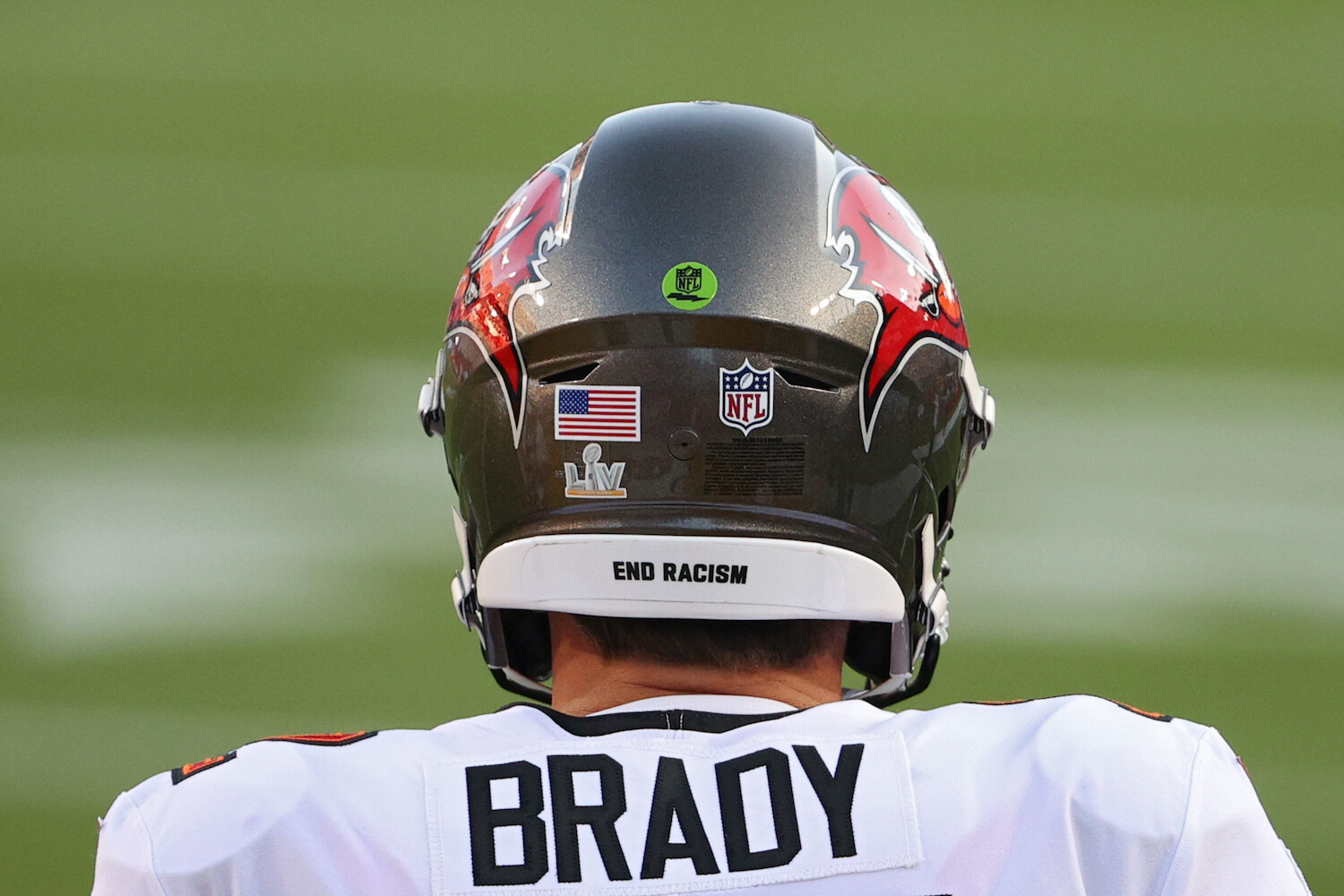At this point in Tom Brady’s NFL career, it’s tough to separate the man from the myth. When a sixth-round pick rises through the ranks to win seven Super Bowl titles, he’s going to be (rightfully) held up as a special player. That reality, however, doesn’t mean that TB12 is perfect. Take, for example, his recent news that he played the entire 2020 campaign with a rather serious knee injury.
While it’s easy to say that reality only adds to the legend — he led the Buccaneers to a Super Bowl by playing through the pain — things aren’t that cut and dry. Brady may have chosen to take the field and accept the risks but, given the culture of professional sports, that decision still proves to be problematic.
Tom Brady played the entire 2020 NFL season with a serious MCL injury
Ever since the 2020 NFL campaign ended, it’s been common knowledge that Brady needed surgery to repair a knee injury. While there’s been some debate over the severity of TB12’s issues, it seems like the truth has finally emerged.
Earlier this offseason, the quarterback appeared on Hodinkee Radio and admitted that he “had a pretty serious knee surgery.” He also explained that “last year it just took a lot” due to the fact that his main priority was tending to the injury and making sure he could take the field each week.
While Brady didn’t go any further into the specifics of his issue, details are starting to leak out.
Rick Stroud of the Tampa Bay Times recently reported that Brady played with a partially torn medial collateral ligament (MCL) in his left knee, which he suffered when he was still with the Patriots. The NFL Network’s Ian Rapoport, however, asserted that TB12 had a fully torn MCL.
Either way, the big-picture story is clear. Brady spent the year playing through a serious knee issue, which never appeared on the injury report, and led the Buccaneers to a Super Bowl title. In theory, that’s what leadership legends are made of.
Tom Brady’s decision is especially problematic, given his status as the NFL’s GOAT
In most sports, playing through the pain is seen as heroic. Brady’s 2020 campaign will probably go on to become a central part of his legacy. Years from now, we’ll probably hear dramatic voice-overs explaining how, after leaving New England, he played an entire season on a bad knee, just to prove that he could win a Super Bowl without Bill Belichick. That thinking, however, can be problematic.
Even if you accept that players are adults who chose to take the field while injured and knew the risks, it’s worth questioning how free they are to choose not to play. The NFL, unlike other sports, doesn’t have guaranteed contracts. If you decide you’re too injured to take the field, that could very well be the end of your employment.
Beyond that, there’s also a cultural issue at play. Those on an NFL roster are expected to prove their toughness and, above all else, play football. Take, for example, a story from Ted Johnson shared in a 2007 New York Times piece. According to the former Patriots linebacker, he took part in a high-impact drill after returning from a concussion, despite the trainer’s recommendation. Johnson claimed that Bill Belichick said that he needed to see if he “could play.”
For his part, the coach said that Johnson should have told him he couldn’t play and noted that he didn’t feel good if he potentially hurt his player.
While those sorts of discussions are usually centered around concussions, situations like Brady’s still feed into the overall culture. As one of modern football’s biggest stars, his actions speak louder than most. If you were a rookie in the Buccaneers’ locker room, for example, TB12 sets the precedent. If he played the entire season on a bad knee, you’d probably feel pretty sheepish to sit out for a lesser, although still serious, injury.
That’s how culture, whether it’s positive or negative, spreads.
Injury culture isn’t a unique issue to the NFL, either
While Tom Brady’s knee injury is the most recent example of a big-name player pushing through an injury, that situation isn’t unique to the NFL. For better or worse, it’s part of hockey culture, too.
Every spring, the Stanley Cup playoffs produce a parade of unseen injuries that aren’t fully revealed until the team is eliminated. We hear about players who stuffed broken ankles inside their skates to take the ice in must-win games. Cracked ribs, damaged fingers, and other ‘minor’ ailments are simply part of chasing the iconic trophy. In theory, it’s part of what makes hockey special. Only these select men care so much that they’re willing to risk life and limb for a chance to lift Lord Stanley’s cup.
While you’ll hear the same objections noted in the NFL discussion — players are adults who can choose to accept the risks of playing while hurt — NHLer Ryan Kesler has spoken out on the subject. Again, the sport’s culture is at the root of the issue.
“To play, you got to take painkillers because if you don’t do that, you’re going to be labeled as a guy that doesn’t battle through injuries,” he explained according to CTV News. “That mindset, it made me want to play every game. I’m focusing on the now I’m injured, I’m going to take a pill.”
Especially in hockey, painkillers can be a touchy subject. Toradol, one of the more common medications prescribed, can cause long-term issues; according to an ESPN write-up, Kesler developed colitis, which he said doctors believe stems from his use of Toradol. On the most dramatic end of the spectrum, NHL fans will remember how enforcer Derek Boogaard died in 2011 after accidentally overdosing on alcohol and oxycodone.
Changing culture isn’t quick or easy; there’s no magic bullet that can make an entire sport change its collective thinking overnight. When a major star like Tom Brady ‘toughs it out’ for an entire season, though, that’s a major obstacle to making any changes.
How to get help: In the U.S., contact the Substance Abuse and Mental Health Services Administration helpline at 1-800-662-4357.
Originally found on Read More


![[VIDEO] Meghan McCain Just Can’t Stop Blasting Biden Lately…](https://manateeherald.com/wp-content/uploads/2021/06/300-4IokkF.jpeg)




